While studded tires have their merits, they’re not allowed everywhere due to the damage they can cause to road surfaces. Enter studless (also called Nordic) winter tires, which offer great traction without the need for metal studs.
These tires are designed with advanced rubber compounds that remain pliable in freezing temperatures, and their tread patterns are optimized for snow and ice traction.
Moreover, they also offer a balance of performance, quietness, and wear resistance, making them a top choice for drivers in severe winter regions.
Now, following are the top winter options here. Each tire offers some unique abilities, which actually put them in this list.
Table of Contents
Continental VikingContact 7
- Offers top-notch results, when it comes to wet traction.
- Review the tire here: https://snowytires.com/continental-vikingcontact-7-review/
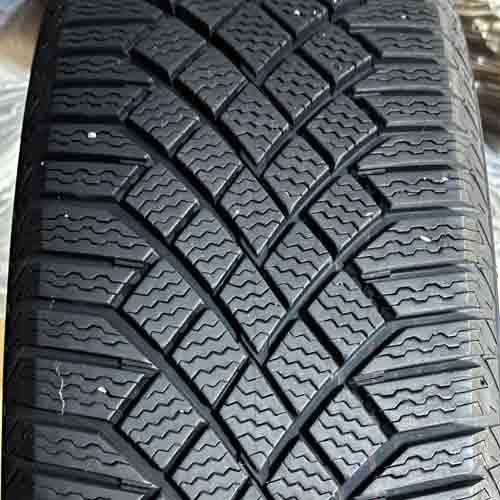
The ability of a tire to grip on wet surfaces depends on how well it can deal with water on the road.
This is where the tire’s grooves and sipes come into play. Grooves help in channeling out most of the water, while sipes work at a microscopic level, pushing out residual water, ensuring a better grip.
The Continental VikingContact 7 stands out in both these areas, where its multi-directional grooves clear out most of the water out, while its dual wave-like siping patterns come in later, efficiently clearing water off with great efficacy.
As the tire offers siping with multiple orientations/angles, you get wet grip in all directions, allowing the tire to brake and corner pretty quickly, relatively.
Michelin X Ice Snow
- Offers best snow performance.
- Review the tire here: https://snowytires.com/michelin-x-ice-snow-review/
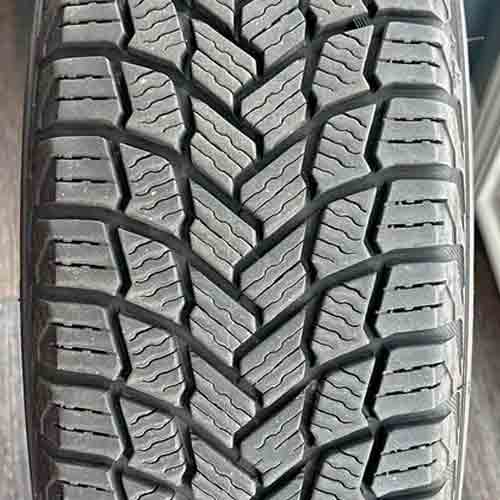
Navigating snow-covered roads demands a tire equipped to handle some unique challenges.
Let’s just say a good tire here needs thermally adaptive rubber compound, and should offer the ability to maintain snow-to-snow contact, while throwing out the excess snow, (as you don’t want to get your tires packed here as well).
Why snow to snow contact is important: The unique nature of snowflakes, with their interlocking structures, allows for greater friction when snow meets snow, compared to when rubber meets snow.
Moreover, you also need a tire that has optimal weight, width (or section-width), and contact patch. All these basically provide the necessary pressure on the lugs, so again, snow to snow contact could be achieved.
Now, the Michelin X-Ice Snow ticks all these boxes, offering you the best overall snow performance (at least according to my tests).
Its specialized directional pattern is adept at scooping up and pushing snow backwards, ensuring the tire keeps moving forward efficiently. And with it’s six distinct ribs and multiple in-groove notches, this tire maximizes snow-to-snow contact, leading to exceptional handling in snowy conditions.
And of course, the tire has a rounded contact patch, and that combined with it’s optimized weight and tread width, it’s performance is further enhanced.
To put its performance into perspective, in tests, the Michelin X-Ice Snow tire clocked the fastest laps on snow-covered tracks. It was, on average, a remarkable 2 seconds quicker than its close competitor, the Blizzak WS90, emphasizing its dominance in snowy terrains.
Now 2 seconds may not seem a lot. It’s A LOT given that you have the same car with similar other variables.
Goodyear WinterCommand Ultra
- Offers quietest ride among its peers.
- Review the tire here: https://snowytires.com/goodyear-wintercommand-ultra-review/
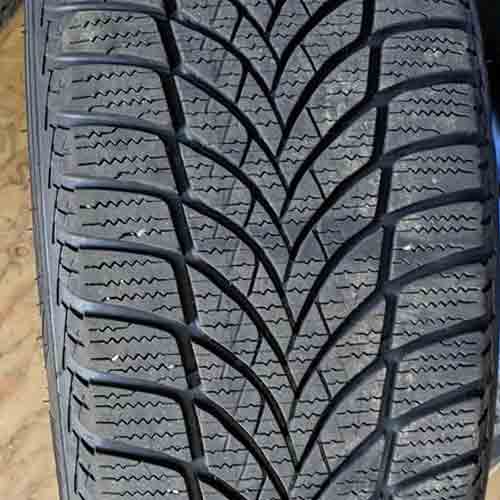
Noise is generated by a lot of variables and factors, but air is the biggest contributor here still.
When air fills the gaps within a tire’s tread, it produces a humming or buzzing sound, its like the difference between blowing over the top of a wide vs. narrow bottle.
The larger these gaps, the more pronounced the noise. Additionally, air particles, primarily entering through the tire’s shoulders, collide with the tread, creating added noise and resonances within the grooves.
Now having said that, it can be explained why the Goodyear WinterCommand Ultra is the quietest winter tire according to my subjective testing.
The tire doesn’t offer too more a shoulder voids, so air is restricted from entry to begin with.
Also unlike many (other) winter tires, with multi-angled siping, its lateral siping arrangement minimizes noise generation.
Furthermore, Goodyear’s advanced variable pitch compound produces diverse tone frequencies simultaneously when air particles interact with the tread walls, preventing noise amplification.
Bridgestone Blizzak WS90
- Offers best ice performance.
- Review the tire here: https://snowytires.com/bridgestone-blizzak-ws90-review/
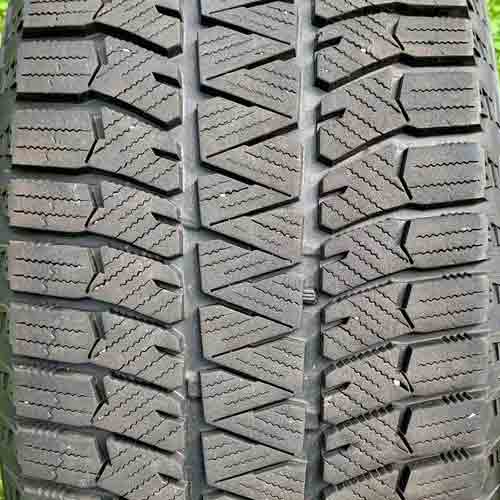
Ice performance evaluates a tire’s capability to achieve grip and stability on various icy terrains, which are of course very slick and offer minimal inherent friction.
That’s why tires need to have a great rubber blend and detailed tread design, as these elements play pivotal roles in overall ice performance.
In other words, a standout tire here should have abundant biters, capable of retaining their flexibility even in extreme cold.
And the Bridgestone Blizzak WS90 is a prime example here, outshining all other premium winter tires, right now.
The central rib of this tire features various notches positioned at angles, enhancing multi-directional grip. This design contributes significantly to the tire’s centered stability.
While it’s tread, offering a rich array of sipes, merging wavy and straight patterns, further enhance its ice grip.
To further explain…It’s V-shaped biters supply directional traction on ice. While the lateral and longitudinal notches on the shoulders, paired with zigzag slits, provide you with superb steering responsiveness.
So you get top notch overall ice performance on this tire.
Barum Polaris 5
- Offers best value for your money.
- Review the tire here: https://snowytires.com/barum-polaris-5-review/
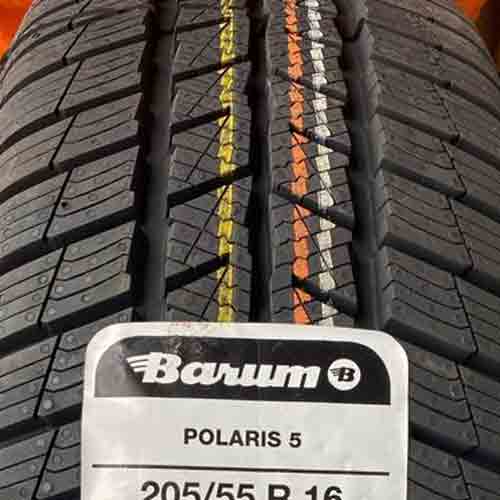
What makes a tire good in terms of value? Well there are a lot of points to note here.
First off, of course, the tire shouldn’t be overly pricey. And it should be decent overall, in terms of snow and ice traction (basically overall winter performance).
And yes, you can’t leave out wet performance too.
Now I am not saying the Polaris 5 is the top notch is those areas, but given its price tag, its reasonable.
Moreover, one of its strengths is its fuel economy, attributed to its low rolling resistance, which further adds to its cost-effectiveness.
But overall, the main thing providing this tire the title of best budget pick is it’s impressive tread lifespan.
When compared to other winter tires, the Polaris 5 is among the longest-lasting, averaging around 40k miles, despite lacking a treadwear warranty. This longevity can be credited to the tire’s reduced weight and firmer rubber blend, ensuring minimal friction with the road and subsequently prolonging tread life.
Kleber Krisalp HP3
- Offers fastest float speeds overall.
- Review the tire here: https://snowytires.com/kleber-krisalp-hp3-review/
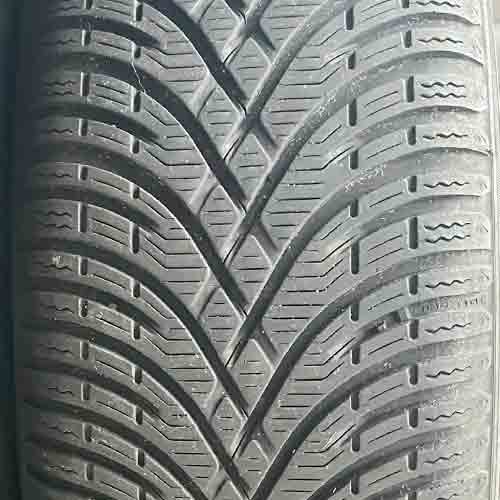
Hydroplaning occurs when water gets trapped between the tire and the roadway, causing the tire to lose traction and potentially float atop the water. Since water can’t be compressed, if not efficiently redirected, it disrupts tire-road contact.
And that’s where the design of grooves come in.
These provide channels or pathways to water, throwing it away, avoiding aquaplaning (another word for it).
Now let me explain why the Kleber Krisalp HP3 is the best tire, when it comes to aquaplaning.
The tire showcases a distinct directional pattern with V-shaped grooves, interconnected laterally, ensuring effective water evacuation from the center to the tire’s shoulders.
And with a rounded contact patch, it has more pressure on the water particles in the middle forcing/pushing them out pretty quickly (towards shoulders), adding to the overall process.
Now to confirm, this mainly throws water out “side-ways”.
While, as tire features very wide in-groove notches, which act as water containers, these help throw out the water longitudinally too.
So in terms of float speeds, the tire excels in both cornering and straight line tests, evacuating water in both directions effectively.
Bridgestone Blizzak DM-V2
- Best option for SUVs.
- Review the tire here: https://snowytires.com/kleber-krisalp-hp3-review/
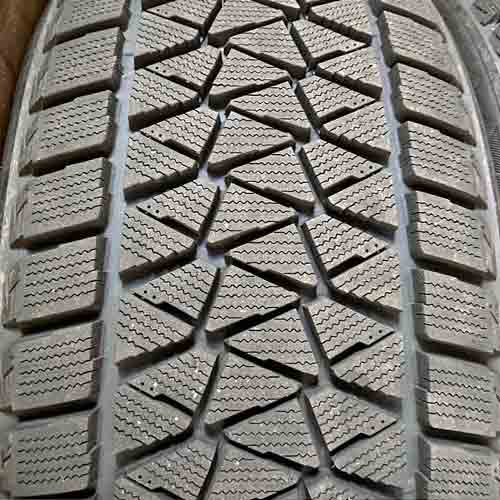
A winter tire that’s suitable for SUVs should have specific characteristics that not only cater to the challenges of cold, snowy, and icy conditions, but also to the unique attributes of SUV/CUVs, such as their greater weight, (slightly elevated) center of gravity, and often their off-road capabilities.
Having said that, it makes sense why you need tires here with decent voids to tread ratio, a long with solid internal construction, and great tread depth.
And that’s where the Bridgestone Blizzak DM-V2 comes in.
The tire offers a lot of XL sizes, which are really suitable to carrying heavier weight, as they can lift 2200 lbs to 2700 lbs, per tire, (depending on the size, you choose).
Moreover, the tire also offers tread depth of 14/32″, on all its XL sizes.
This not only adds extra layer of rubber, providing comfort, durability and tread life, but also provides slightly off road performance as well, as dirt particles are scooped out easily.
Moreover, the tire features a symmetric pattern with a lot of triangular blocks, these provide very powerful grip and in all directions too.
Pirelli Winter Sottozero 3
- Offers best fuel economy, overall.
- Review the tire here: https://snowytires.com/pirelli-winter-sottozero-3-review/
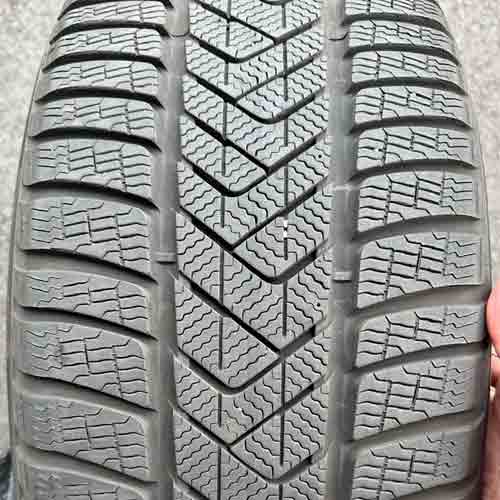
The Pirelli Winter Sottozero 3 is considered one of the top choices when it comes to fuel economy in winter tires, as it offers advanced rubber composition, that keeps its rolling resistance low.
Moreover, its optimized sidewall design is more aerodynamic, keeping the drag low, enhancing economy further.
Though most of its performance comes form its temparature reactive polymers in its rubber, these basically adjust the lugs stiffness, based on the temperature.
(In milder cold temperatures, where maximum softness isn’t needed, the tire remains slightly stiffer, reducing rolling resistance and conserving fuel).
Now the tire comes in 16 to 21 inches with speed ratings of H, V and W, tread depth of 10/32″ on all sizes, and weight going from 18 lbs to 32 pounds.
Now greater the speed rating, greater would be the grip. So out of all its sizes, the H rated ones offer the best performance here.
Moreover, as weight also effects overall fuel consumption, it best you also choose the size with minimal weight.
Conclusion
After a thorough examination of a variety of winter tires, I can conclude that each tire has its own unique strengths tailored to specific conditions and user requirements.
From wet traction, snow and ice performance, to quiet rides and value for money, these tires have been carefully reviewed to help you make a “correct” decision.
A key reminder is that the choice of tire can significantly influence driving safety and performance during the harsh winter months. Hence, selecting a tire that best aligns with your driving needs and regional conditions, is the main thing to look out for, here.
Lastly, I should add that as tire industry continues to innovate and introduce new technologies, it’s crucial to stay updated. And having said that, I will keep on including newer tires here, if I see them fit.
Make sure to revisit this space for the latest insights and recommendations.